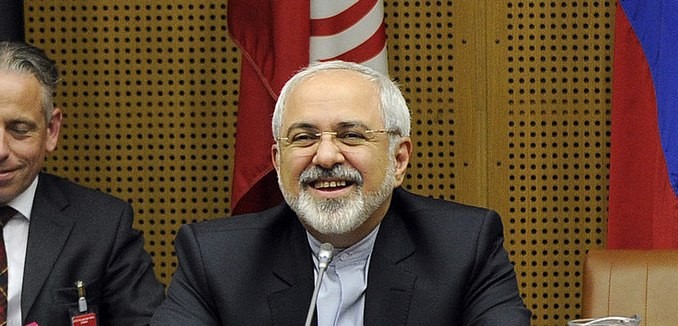Iran’s foreign minister called his country’s ability to restore its uranium enrichment program after the tenth year of the nuclear deal it reached with world powers last year a “matter of pride,” the Associated Press reported Tuesday. Mohammad Javad Zarif’s comments came in response to a report published Monday by the AP about a secret add-on to the Iran deal, which reduces Iran’s breakout time to a nuclear device.
Zarif, who also served as Iran’s top nuclear negotiator, said the previously confidential document that his country filed with the International Atomic Energy Agency was crafted by “negotiators and industry experts.” The secret side-deal — revealed to the AP by a diplomat who worked on issues related to Iran’s nuclear program for over a decade, and confirmed by another diplomat possessing the same document — has raised further questions about the nuclear accord’s ability to prevent Iran from developing a nuclear bomb over the next 15 years.
According to the AP report, the side-deal stipulates that after the first ten years of the nuclear agreement, Iran will be able to replace its 5,060 current centrifuges with up to 3,500 advanced ones. These upgraded centrifuges are up to five times more efficient than Iran’s current equipment, and would allow the Islamic Republic to enrich uranium twice as fast as it is now. Iran’s breakout time to a nuclear device would consequently be halved from one year to six months or less.
While the document doesn’t address Iran’s enrichment capacity beyond year 13 of the nuclear agreement, U.S. Energy Secretary Ernest Moniz told the AP that Iran will be able to install as many advanced centrifuges as it wants past that point.
“That will give Iran a huge potential boost in enrichment capacity, including bomb making should it choose to do so. But it can be put to use only after the deal expires,” the AP noted.
The Obama administration insisted while attempting to sell the nuclear deal to skeptics that it ensures that Iran has a breakout time of at least a year, though others have cast doubt on this estimate. In testimony before the Senate last August, David Albright, the founder and president of the Institute for Science and International Security, said that Iran’s breakout time could be as little as six or seven months under the terms of the nuclear deal.
In a paper (.pdf) published a few weeks later, Albright and two co-authors explained how the introduction of advanced centrifuges and reduced restrictions would allow Iran to reduce its breakout time from seven to 13 months over the first ten years of the deal, then to three months by the end of year 15, and a matter of days by year 18.
President Barack Obama acknowledged in an interview in April 2015 that Iran’s breakout time would be “near zero” by the end of year 15. Obama’s surprise admission confirmed a concern addressed by Israeli Prime Minister Benjamin Netanyahu a month earlier in his historic speech before Congress, when he said that the possibility existed of “an even greater danger that Iran could get to the bomb by keeping the deal.” Netanyahu added that once limits on Iran’s enrichment activity were lifted, Iran could have enough centrifuges to “make the fuel for an entire nuclear arsenal and this in a matter of weeks, once it makes that decision.”
The nuclear deal allowed Iran to continue enriching uranium, even though its enrichment activities were in defiance of its Nuclear Nonproliferation Treaty obligations and led to multiple UN Security Council resolutions and sanctions.
[Photo: Bundesministerium für Europa, Integration und Äusseres / Flickr ]




